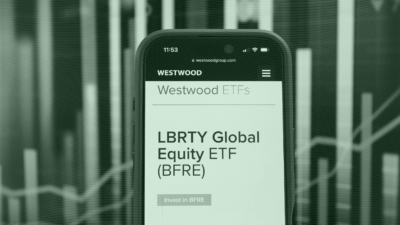AllianceBernstein’s New Emerging Markets ETF May Get a Trump Bump
The trade war doesn’t look so bad for international markets (at least not yet), and the trend away from US stocks could benefit emerging markets…

Sign up for market insights, wealth management practice essentials and industry updates.
“America first” is a punchy slogan, but may not exactly be a trading strategy.
Last week’s dramatic rotation by investors out of US stocks and into international holdings pulled down the stock market, but may have been serendipitous for ETFs focused outside of the country. One firm, AllianceBernstein, filed with the SEC this week for an active emerging markets ETF. The filing comes just as global fund managers went underweight on US holdings by nearly 25%, representing the biggest drop in US equity allocation ever, according to a report from Bank of America.
Nobody Said It Was EAFE
AllianceBernstein’s ETF is another active fund dropping into a rising pile. And while the timing certainly seems to be spot on, the company has been planning it for some time, said Noel Archard, the company’s global head of ETFs. The forthcoming ETF is not a copy of any of the firm’s mutual funds, though AllianceBernstein includes a similar emerging markets strategy as a component of other funds.
“We wanted to make sure that what we were putting out there was very asset allocation-, very model-friendly,” Archard said. Among the company’s 17 active ETFs, there is one focused on world growth and an international low volatility strategy, he said. “Emerging markets was the next logical place to expand.”
AB has its own line of model portfolios, which currently are a mix of mutual funds and ETFs. Others, including Fidelity and Capital Group, have recently rolled out their own ETF-exclusive model portfolios. Of course, ETFs have been growing at the cost of mutual funds, favored by lower fees and tax efficiency. Active ETFs have grown quickly, but from a smaller base than the much larger passive category.
Passive Aggressive. There are 41 actively managed ETFs in the US focused on emerging markets, up from just 28 a year ago, representing about $22 billion, as of February, according to Morningstar Direct. But those are among more than 300 in a category dominated by passive funds, said Daniel Sotiroff, senior analyst in passive strategies research for North America at Morningstar Research Services:
- Net sales in actively managed emerging markets ETFs were $1.3 billion in the first two months of this year, up from less than $800 million in the first two months of 2024, a 65% increase, according to Morningstar Direct.
- Meanwhile, actively managed US equity ETFs, which have benefited from outflows from mutual funds, pulled in more than $20 billion and $12.5 billion during those time frames, marking a 63% boost.
It’s a tough space for active managers, as about 40% of emerging markets don’t allow the in-kind transactions that give ETFs their tax efficiency, he said. Any new ETFs also have to compete with passive incumbents like the $85 billion iShares Core MSCI Emerging Markets ETF and $84 billion Vanguard FTSE Emerging Markets ETF.
“This whole move into ETFs on the part of active managers is relatively new,” Sotiroff said. “It looks like it’s going to be a mountain to climb. You’ve got two giants in that area.”











